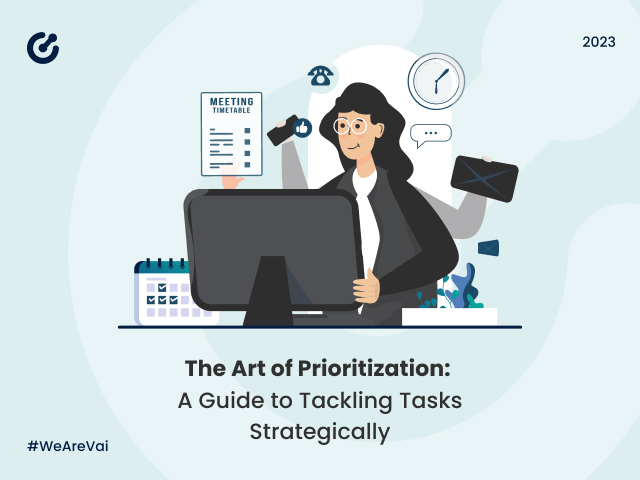In today’s fast-paced world, where demands and responsibilities seem to multiply by the minute, mastering the art of prioritization has become a crucial skill.
Imagine starting your workday with a clear plan of action that not only ensures you address pressing matters but also aligns with your long-term goals. This is The Art of Prioritization – a compass that guides you through the chaos and helps you navigate your way to success.
Understanding the principles of prioritization
Prioritization isn’t merely about categorizing tasks; it’s a strategic approach to managing your time and energy. To begin, assess each task’s urgency and importance. Urgent tasks require immediate attention, while important tasks contribute significantly to your long-term goals. The sweet spot lies in identifying tasks that are both urgent and important and deserve your immediate focus.
The Eisenhower Matrix: A tool for clear decision-making
Enter the Eisenhower Matrix, a simple yet effective tool that divides tasks into four categories:
1. Urgent and important: These tasks take top priority. Address them promptly to prevent crises and meet essential deadlines.
2. Important but not urgent: Allocate time to these tasks. They contribute to your goals but can be scheduled for later, avoiding last-minute stress.
3. Urgent but not important: Evaluate if these tasks truly demand your attention. Delegate or minimize time spent on them whenever possible.
4. Neither urgent nor important: These distractions can be safely eliminated or postponed, freeing up valuable time for more significant endeavors.
Leveraging personal strengths
Understanding your strengths can significantly impact your prioritization process. Identify tasks that align with your skills and expertise, and allocate time to tackle them. By leveraging your strengths, you not only complete tasks efficiently but also enjoy a sense of accomplishment, boosting your overall motivation.
Creating a prioritization routine
Consistency is key to effective prioritization. Start your day by reviewing your tasks and categorizing them based on the Eisenhower Matrix. Set clear goals for the day, focusing on the “Urgent and Important” quadrant.
Break larger tasks into manageable steps and allocate specific time blocks for focused work. Remember to build in buffer time for unexpected challenges.
The power of saying no
One of the most challenging aspects of prioritization is learning to say no. While it’s tempting to take on every task that comes your way, overcommitting can lead to burnout and compromised quality.
Politely decline tasks that don’t align with your priorities or workload capacity, allowing you to invest your time where it matters most.
Adapting and evolving
Prioritization is not a one-size-fits-all approach; it requires continuous refinement. Regularly assess your progress, celebrate achievements, and adjust your priorities as circumstances change. Be open to learning from your experiences and seeking feedback to enhance your prioritization skills.
To sum it up, the art of prioritization is a powerful tool that empowers you to navigate the complexities of work and life strategically. By discerning between urgency and importance, harnessing your strengths, and cultivating a disciplined approach, you pave the way for organized and efficient workdays.
Remember, effective prioritization isn’t about doing more; it’s about doing what matters most. So, embark on this journey, and watch as your productivity and sense of accomplishment soar to new heights.
Join us at VAI
At VAI, we recognize the value of individuals who possess the skill of strategic prioritization. We’re always on the lookout for passionate minds like yours, eager to contribute to our ongoing success and become an integral part of our dynamic team.
Check out our job openings and see if we’ve got something for you!
Also, follow us on Instagram to get a sneak peek into our company culture and the #VAILife.

